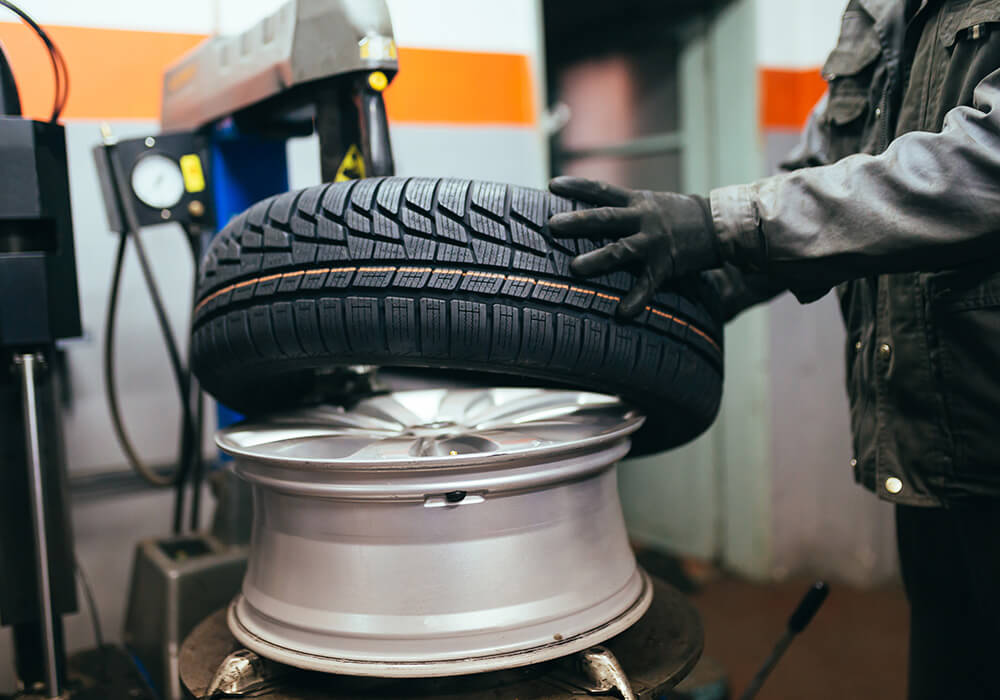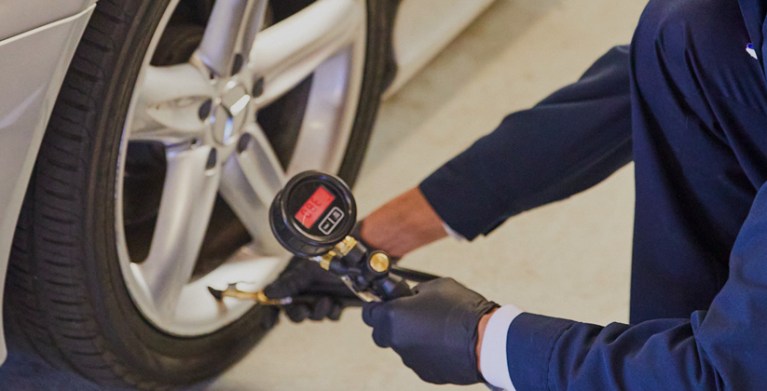Morris Tires: Your Partner for Professional GMC Tires Service
Morris Tires: Your Partner for Professional GMC Tires Service
Blog Article
Tire Solution: The Impact of Climate Condition
When it comes to ensuring optimum performance and security on the roadway, recognizing the effect of climate conditions on tire service is vital. GMC Tire Service. In this discussion, we will certainly discover the intricate connection in between weather condition conditions and tire solution, shedding light on the significance of weather-specific tire maintenance techniques and considerations.
Warm and Tire Efficiency
When exposed to high temperature levels, tires experience changes in performance that can substantially affect lorry safety and security and handling. The warmth created from extended driving or warm weather conditions creates the tire rubber to soften, leading to lowered tread life and boosted wear.

Winter Effects
Cold climate problems can have a substantial effect on tire performance and security. In chilly climate, tires might also shed air pressure a lot more swiftly, which can impact handling and fuel effectiveness.
To minimize the results of winter on tires, it is important to on a regular basis check tire pressure and inflate them to the supplier's suggested degrees. Making use of winter season or all-season tires created for winter conditions can likewise boost grip and grip on icy or snowy roads. Appropriate tire maintenance, including normal inspections for wear and damage, comes to be much more crucial throughout chillier months to make sure optimal efficiency and safety.
Rainy Conditions Effect
Tires with worn-out footsteps are a lot more prone to hydroplaning, where a layer of water constructs up between the road and the tire surface, leading to loss of traction. To combat this, chauffeurs should routinely inspect their tires for sufficient step depth and take into consideration investing in tires specifically designed for wet conditions.
Additionally, stormy climate can additionally reduce exposure, making it challenging for vehicle drivers to see the roadway ahead plainly (GMC Tire Service). In such problems, it is vital to change driving rates accordingly and preserve a secure adhering to distance to permit abrupt stops. Correctly filled with air tires can additionally help in keeping control on wet roadways by giving much better handling and hold
Snow and Tire Security
Snow-covered roads position special difficulties for motorists, emphasizing the value of correct tire selection and maintenance. When driving in snowy problems, having the morris tires appropriate tires can make a substantial distinction in safety and security and performance. Winter season tires are created with unique rubber substances and walk patterns to give better grip on snow and ice compared to all-season tires. The deeper treads and sipes of winter tires help grip the roadway better, minimizing the threat of slipping and gliding.

Furthermore, motorists ought to think about mounting tire chains in extreme snowy conditions. Tire chains supply extra grip by grasping the snow and ice, enhancing security and control. Nevertheless, it is necessary to see this site adhere to producer instructions when using and setting up tire chains to stop damage to the tires and automobile. By choosing the appropriate tires, preserving appropriate inflation, and considering additional grip help like tire chains, drivers can boost their safety and security when browsing snow-covered roads.
Weather-Related Tire Upkeep
When confronted with different climate condition, proper tire maintenance ends up being an essential facet of automobile security and efficiency. Weather-related tire maintenance encompasses a variety of techniques focused on making sure optimal tire function and longevity in various climate scenarios. One vital aspect of weather-related tire upkeep is tire pressure law. Varying temperatures can trigger tire pressure to differ, influencing traction and gas efficiency. Regularly adjusting and inspecting tire pressure according to supplier recommendations is essential for risk-free driving in transforming climate condition. Additionally, tire walk depth plays a substantial role in dealing with different weather condition aspects. Tires with ample tread depth offer much better grip on wet or icy roadways, reducing the danger of skidding or hydroplaning. When step wear gets web link to a particular depth is vital for maintaining traction and security in damaging weather condition, evaluating tire tread consistently and changing tires. By prioritizing weather-related tire maintenance, drivers can improve safety and security, boost lorry efficiency, and prolong the life-span of their tires.
Final Thought
In conclusion, climate condition have a considerable effect on tire efficiency and security. From warmth influencing tire pressure and use to cold weather minimizing traction, it is vital to take into consideration the weather condition when keeping and utilizing tires. Stormy conditions can reduce grasp and result in hydroplaning, while snow can raise the danger of crashes if tires are not correctly equipped. Weather-related tire maintenance is important in making certain ideal efficiency and security on the roads.
In this conversation, we will certainly discover the intricate partnership in between weather conditions and tire solution, dropping light on the significance of weather-specific tire upkeep techniques and factors to consider.

Report this page